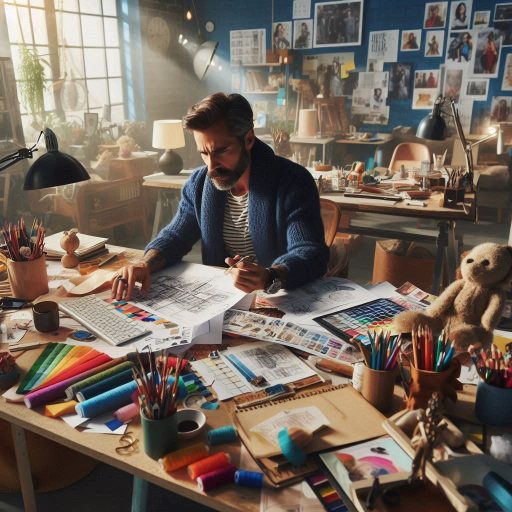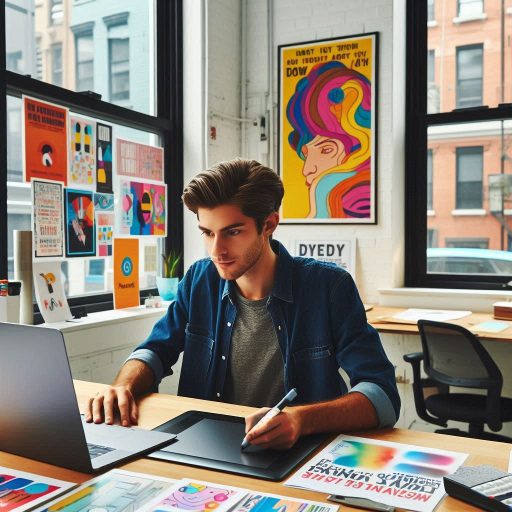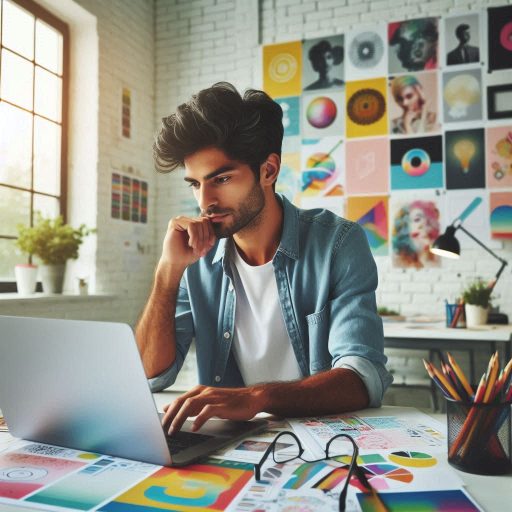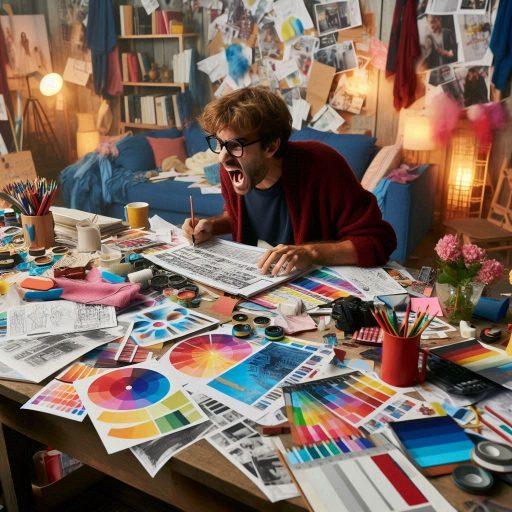Introduction
Production designers play a crucial role in the film and television industry.
They create the visual environment that enhances storytelling and engages viewers.
By designing sets, selecting colors, and choosing props, they transform scripts into immersive experiences.
To effectively execute their vision, production designers rely on essential tools.
These tools enable them to communicate ideas clearly and efficiently.
For example, design software like AutoCAD and SketchUp allows designers to create detailed 3D models.
These visualizations help directors and producers understand the proposed designs.
Additionally, mood boards are valuable for conveying color schemes, textures, and overall aesthetics.
They help establish a cohesive visual direction, making collaboration easier.
Physical tools like drafting tables, drawing supplies, and paint swatches also support the creative process.
The importance of these tools lies in their ability to streamline workflows and enhance creativity.
Production designers must quickly adapt to feedback and changes while maintaining the director’s vision.
Having the right tools at their disposal facilitates this process and allows for efficient problem-solving.
Production designers are vital in bringing a director’s vision to life.
The essential tools they use help them create compelling visuals that captivate audiences and elevate storytelling in film and television.
Computer-Aided Design Software
Importance of Software Like AutoCAD, SketchUp, or Adobe Creative Suite in Creating Digital Drafts and Designs
Production designers rely heavily on digital tools for their work.
Software like AutoCAD, SketchUp, and Adobe Creative Suite plays a vital role.
These tools streamline the design process and enhance creativity.
They enable designers to create digital drafts and refine their ideas efficiently.
AutoCAD is essential for precise architectural drawings.
It allows production designers to produce detailed floor plans and technical drawings.
This software helps maintain accuracy and consistency in design.
Designers can easily modify dimensions and layouts as needed.
SketchUp, on the other hand, excels in 3D modeling.
It enables designers to visualize sets and environments in three dimensions.
This visualization helps identify spatial relationships and design challenges.
Designers can experiment with different layouts and perspectives quickly.
Adobe Creative Suite complements these tools with graphic design capabilities.
Applications like Photoshop and Illustrator allow designers to create mood boards.
These visuals help convey the intended aesthetic to the production team.
Additionally, designers can manipulate images and graphics for presentations.
Using these software tools significantly speeds up the design process.
Designers can create and adjust drafts in real time.
This efficiency is crucial in the fast-paced environment of film and television production.
Precise Measurements, 3D Modeling, and Easy Collaboration with Other Team Members
One major advantage of using software like AutoCAD and SketchUp is precision.
These tools allow production designers to take exact measurements.
This accuracy ensures that all elements fit together seamlessly on set.
In 3D modeling, precise measurements enhance the realism of designs.
Designers can create environments that feel authentic and believable.
This attention to detail impacts how the audience perceives the story visually.
Collaboration becomes more straightforward with these tools.
Designers can easily share digital drafts with other team members.
This sharing fosters communication and helps maintain a unified vision.
Team members can provide feedback directly on the designs, streamlining the revision process.
Cloud-based features in many design software applications allow for real-time collaboration.
Multiple team members can work on a project simultaneously.
This capability enhances productivity and encourages creative exchanges.
When changes occur, production designers can update designs quickly.
They can implement feedback and share revised drafts without starting from scratch.
This flexibility is crucial in the dynamic landscape of film production.
Ultimately, the integration of these tools elevates the work of production designers.
They can experiment with designs, making informed decisions based on visual data.
This experimentation often leads to innovative solutions and unique design concepts.
Software like AutoCAD, SketchUp, and Adobe Creative Suite is essential for production designers.
Read: Best Tools and Software for Character Designers
Mood Board Creation Tools
The Use of Tools Like Pinterest, Milanote, or Adobe Spark for Creating Mood Boards
Production designers utilize various tools to visualize their ideas effectively.
Mood boards are essential for establishing the aesthetic direction of a project.
Tools like Pinterest, Milanote, and Adobe Spark simplify this creative process.
These platforms enable designers to curate images, textures, and colors that inspire their vision.
Pinterest is a popular tool for gathering visual inspiration.
Designers can create boards dedicated to specific themes or projects.
They can easily search for images that align with their concepts.
This vast library allows for endless possibilities and creative exploration.
Milanote offers a more organized approach to mood board creation.
This tool allows designers to arrange images, text, and notes on a flexible canvas.
They can visually map out their ideas and see how different elements work together.
Milanote’s intuitive layout encourages creativity and makes it easy to rearrange components as needed.
Adobe Spark provides powerful design capabilities for creating polished mood boards.
With its user-friendly interface, designers can easily edit images and add text.
They can customize layouts and share their boards with collaborators quickly.
Adobe Spark helps production designers present their ideas professionally and visually engagingly.
Using these tools, production designers can experiment with various aesthetics.
They can mix colors, textures, and styles to refine their vision.
Mood boards serve as a visual reference throughout the design process.
They help designers stay focused on their goals and maintain consistency.
How Mood Boards Help Communicate the Desired Look and Feel to the Director and Other Crew Members
Mood boards play a vital role in communicating design concepts.
They provide a visual language that transcends words, conveying ideas effectively.
Production designers use mood boards to express the desired look and feel of a project.
When presenting mood boards to directors, designers showcase their creative direction.
These boards help clarify the overall vision and align everyone involved.
Directors can quickly grasp the intended atmosphere, which aids in decision-making.
Additionally, mood boards serve as a reference for other crew members.
Set decorators, costume designers, and lighting technicians benefit from this visual guidance.
They can interpret the designer’s vision accurately and execute it on set.
This collaboration ensures that all elements harmonize to create a cohesive final product.
Creating mood boards fosters open dialogue among the creative team.
As designers share their ideas, they invite feedback from the director and crew.
This collaborative process can lead to new insights and refinements.
Mood boards become a central point for discussion, allowing everyone to contribute creatively.
Moreover, mood boards help avoid miscommunication.
By visually representing ideas, designers minimize the risk of misunderstandings.
Crew members can refer back to the mood board throughout production, ensuring everyone stays aligned with the vision.
As projects evolve, production designers can update their mood boards.
This flexibility allows for adjustments based on new ideas or changes in direction.
Maintaining an updated mood board helps the team stay on the same page during production.
Tools like Pinterest, Milanote, and Adobe Spark are essential for production designers.
They enable the creation of mood boards that visually represent a project’s aesthetic direction.
Mood boards facilitate effective communication with directors and crew members.
They serve as a collaborative reference point throughout the design process, ensuring everyone works toward a unified vision.
Read: Ceramic Art: From Hobby to Professional Career
Color Palette Generators
The Usefulness of Tools Such as Coolors, Adobe Color, or Pantone Color Finder
Production designers rely on effective tools to select and coordinate color schemes.
Tools like Coolors, Adobe Color, and Pantone Color Finder streamline this process.
These platforms help designers visualize color combinations and their emotional impact.
Coolors is an intuitive color palette generator.
It allows users to create and explore various color schemes effortlessly.
Designers can lock in specific colors and generate complementary options.
This flexibility helps them experiment with different palettes for sets and costumes.
Adobe Color offers powerful features for creating harmonious color schemes.
Designers can extract colors from images, ensuring alignment with the visual theme.
This tool is especially useful for matching colors with existing elements in a scene.
Pantone Color Finder provides designers with a standardized color reference.
Using Pantone colors ensures consistency across different materials and production stages.
This consistency is vital for maintaining the visual identity of a production.
Designers can easily communicate color choices with other departments, such as costumes and props.
These tools also aid in presenting color ideas to directors and producers.
Designers can create visually appealing palettes that convey their concepts clearly.
This effective communication fosters collaboration and helps ensure everyone shares the same vision.
How Color Palette Generators Can Streamline the Design Process and Ensure Visual Consistency Throughout the Production
Color palette generators significantly streamline the design process.
They allow designers to quickly generate multiple options, saving time and effort.
This efficiency enables designers to focus on other creative aspects of their work.
By using these tools, designers can quickly experiment with various color combinations.
They can assess how different colors interact with each other.
This experimentation helps them find the perfect palette that enhances the story and characters.
Color palette generators also promote visual consistency.
A consistent color scheme throughout a production reinforces themes and character identities.
This cohesion helps the audience connect emotionally with the narrative.
Additionally, designers can save their palettes for future reference.
This feature allows for easy access and ensures that color choices remain consistent across scenes.
Maintaining visual continuity enhances the storytelling experience for viewers.
These tools also facilitate collaboration among team members.
When designers share color palettes, directors and cinematographers can provide feedback.
This collaboration ensures that the chosen colors align with the overall vision of the production.
Moreover, color palette generators help designers keep track of color values.
They can note specific color codes, making it easier to replicate colors later.
This accuracy is essential for coordinating sets, costumes, and props effectively.
As productions grow more complex, maintaining visual consistency becomes crucial.
Color palette generators help designers manage this complexity.
They provide a clear framework for making informed design choices.
Lastly, using these tools empowers designers to push creative boundaries.
With the right palette, they can experiment with bold choices and unconventional combinations.
This exploration can lead to stunning visual storytelling that captivates audiences.
Tools like Coolors, Adobe Color, and Pantone Color Finder are essential for production designers.
They streamline the design process, promote visual consistency, and enhance collaboration.
Read: How to Create Memorable Characters: Pro Tips
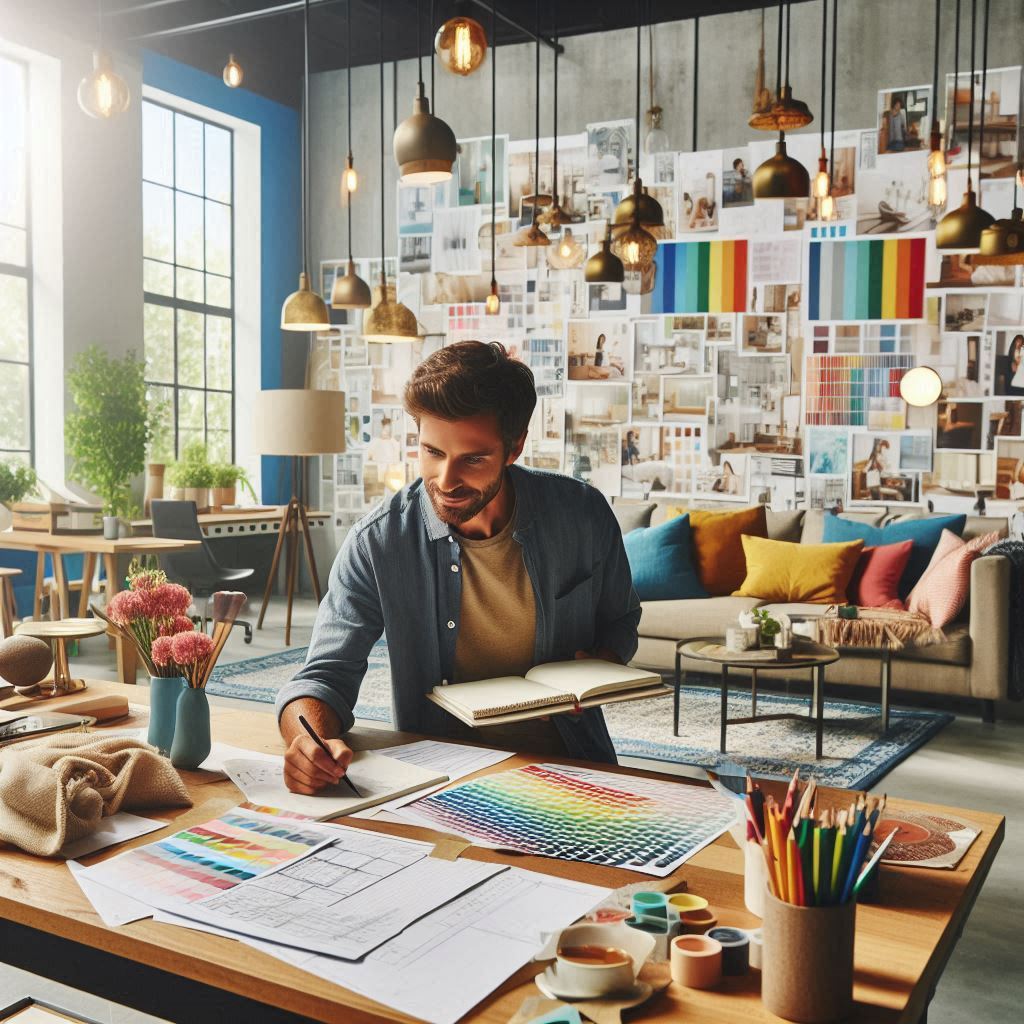
Set Design Software
The Benefits of Specialized Software
Production designers rely on specialized software to create detailed set designs and floor plans.
Tools like Set Designer, Vectorworks, and Cinema 4D enhance the design process.
These programs offer unique features that streamline the workflow for designers.
Using Set Designer simplifies the creation of floor plans.
This software provides user-friendly templates and tools for precise measurements.
Designers can easily draw walls, doors, and furniture layouts.
This accuracy helps ensure that designs fit within the physical space.
Vectorworks is another powerful tool for production designers.
It offers advanced drafting capabilities and 3D modeling features.
Designers can create intricate designs that bring their visions to life.
The software allows for easy adjustments, making it simple to refine concepts.
Cinema 4D excels in rendering and visual effects.
Production designers can create stunning visualizations of their designs.
This capability helps them showcase ideas to directors and producers effectively.
High-quality renders facilitate discussions about lighting, color, and textures.
Moreover, using specialized software saves time and reduces errors.
Automated features minimize the risk of manual mistakes during the design process.
Designers can focus more on creativity and less on technical details.
These tools also provide a professional presentation of designs.
Well-crafted visuals impress stakeholders and enhance collaboration.
They help convey complex ideas clearly, leading to better feedback.
Visualizing Complex Spatial Layouts
Specialized software aids production designers in visualizing complex spatial layouts.
Designers can create 3D models that represent the entire set accurately.
This visualization helps them understand how different elements interact within the space.
For instance, using Cinema 4D allows designers to experiment with camera angles and lighting.
They can visualize how scenes will appear on screen.
This capability leads to better planning and execution during production.
Additionally, these tools enable designers to simulate real-world conditions.
They can test how light interacts with different materials and colors.
This testing helps ensure that the final product meets artistic and technical standards.
Production designers can also use these tools for collaboration with other departments.
Clear visualizations help communicate ideas to directors, cinematographers, and art teams.
This collaboration ensures that everyone is on the same page and working toward a common vision.
Moreover, specialized software allows for easy sharing and updating of designs.
Production teams can access the latest versions of plans and models.
This accessibility streamlines communication and reduces misunderstandings.
The ability to create detailed set designs enhances the overall production process.
Designers can anticipate potential challenges and address them early on.
This proactive approach leads to smoother productions and fewer delays.
Enhancing Team Communication
Effective communication is essential in the fast-paced world of production design.
Specialized software enhances this communication among team members.
Visual tools provide a common language for discussing ideas and concepts.
Production designers can present their designs in engaging formats.
High-quality visuals capture the attention of stakeholders and facilitate discussions.
These presentations make it easier to explain complex spatial layouts and design choices.
Furthermore, these tools often include features for annotations and notes.
Designers can leave comments and suggestions directly on the designs.
This functionality fosters collaboration and encourages feedback from team members.
In short, specialized software like Set Designer, Vectorworks, and Cinema 4D plays a vital role in production design.
These tools help create detailed set designs and floor plans efficiently.
They enable designers to visualize complex spatial layouts and communicate effectively with the team.
By enhancing collaboration and streamlining the design process, these tools contribute to the overall success of film and television productions.
As technology continues to evolve, production designers will benefit from these essential tools, shaping the future of visual storytelling.
Read: Ceramic Art Exhibitions to Visit in 2024
Prop Sourcing Apps
The Use of Apps for Finding and Purchasing Props
In today’s fast-paced production environment, finding the right props is crucial.
Production designers need effective tools to source items quickly.
Apps like Artsy, eBay, and Prop Source have transformed how designers find props.
These platforms streamline the prop sourcing process, making it easier to meet project needs.
Artsy connects designers with artists and galleries.
This app allows for purchasing unique artwork that enhances a production’s aesthetic.
Designers can browse various styles and genres to find the perfect pieces.
The app’s user-friendly interface simplifies the search process.
You can filter options by medium, style, or price range to fit your budget.
eBay offers a vast marketplace for various props and materials.
This platform provides access to both new and used items.
Designers can find everything from vintage furniture to unique collectibles.
Bidding on items can result in great deals, saving costs for productions.
The search feature allows users to quickly locate specific props or categories.
Prop Source specializes in providing a wide range of props for productions.
This app focuses on helping designers find everything from furniture to decorative items.
The catalog is extensive, with categories that cover multiple styles.
Designers can easily browse through options that align with their vision.
The app simplifies the process of finding props that suit the production’s aesthetic.
How Prop Sourcing Apps Save Time and Resources
Prop sourcing apps significantly save time and resources for production designers.
Searching for props traditionally involves extensive scouting and trips to multiple locations.
These apps consolidate the search process, bringing countless options to one platform.
Designers can browse thousands of items from the comfort of their studios.
This convenience allows for more time spent on creative aspects of the project.
With these apps, designers can quickly compare prices and options.
This feature ensures they make informed decisions without wasting time.
Access to a diverse range of suppliers enhances the likelihood of finding perfect props.
Designers no longer need to limit themselves to local resources.
Instead, they can source props from various regions and vendors.
These apps also streamline communication with sellers.
Designers can directly message sellers to ask questions or negotiate prices.
This efficiency reduces delays in the sourcing process.
Clear communication helps avoid misunderstandings and ensures timely transactions.
Additionally, many prop sourcing apps provide user reviews and ratings.
This feature helps designers assess the reliability of sellers.
Reading past experiences from other users informs better purchasing decisions.
Designers can trust the quality of items based on verified reviews.
Using apps also promotes sustainability in production design.
By opting for used or vintage items, designers reduce waste.
These platforms often feature environmentally friendly options that align with sustainable practices.
This approach not only supports responsible sourcing but also adds unique character to productions.
Lastly, prop sourcing apps enable designers to stay organized.
Many platforms allow users to save favorite items or create wish lists.
This organization helps keep track of potential purchases and budget considerations.
Designers can prioritize their selections based on the production’s needs and timeline.
Apps like Artsy, eBay, and Prop Source are essential tools for production designers.
Virtual Reality Tools
Emerging Trend: Using Virtual Reality Tools for Immersive Previsualization
Production designers are embracing new technologies in their craft.
One of the most exciting trends is the use of virtual reality (VR).
Tools like Oculus Rift, HTC Vive, and Google Cardboard are transforming the design process.
These tools allow designers to create immersive previsualizations of sets and scenes.
Virtual reality offers a new dimension in the planning phase.
Designers can step inside their creations before any physical work begins.
This capability enhances the creative process and fosters innovation.
It allows designers to explore their concepts in a fully immersive environment.
Using VR tools provides a unique perspective on the design.
Designers can visualize how each element interacts within a space.
This comprehensive view helps identify potential issues early in production.
It also allows for quick adjustments before committing to a final design.
Furthermore, VR tools encourage collaboration among the creative team.
Directors, cinematographers, and other key personnel can join the experience.
Everyone can discuss ideas in real time within the virtual environment.
This collaborative approach fosters a shared vision for the project.
Understanding Scale, Mood, and Spatial Relationships
One of the most significant benefits of VR is understanding scale.
Production designers can accurately gauge the size of their sets.
They can compare elements within the environment, ensuring everything feels proportionate.
This understanding prevents discrepancies between design and actual filming.
Moreover, virtual reality helps set the mood for each scene.
Designers can experiment with lighting and color in real time.
They can instantly see how different lighting conditions affect the atmosphere.
This capability allows for a more nuanced approach to design.
Spatial relationships become clearer with VR tools.
Designers can navigate their sets as if they were on location.
This experience offers valuable insights into how spaces flow together.
They can assess how actors will move within the environment.
Understanding spatial dynamics is essential for creating realistic scenes.
VR also allows for testing various design concepts.
Designers can create multiple versions of a scene quickly.
They can change colors, materials, and layouts with ease.
This flexibility encourages exploration and experimentation.
Designers can make informed decisions based on real-time feedback.
Enhancing the Creative Process
The integration of virtual reality into production design enhances creativity.
Designers can visualize complex concepts without needing physical prototypes.
This capability saves time and resources during the planning phase.
It also reduces the risk of costly changes later in production.
Incorporating VR tools into the design process fosters innovation.
Designers can push the boundaries of traditional methods.
They can create more ambitious and imaginative environments.
By embracing this technology, production designers can stay ahead of industry trends.
However, VR tools do require some investment and training.
Designers must familiarize themselves with the technology and its applications.
This learning curve is worth the effort for the benefits it provides.
As the technology evolves, its accessibility continues to improve.
Virtual reality tools are revolutionizing production design.
Tools like Oculus Rift, HTC Vive, and Google Cardboard offer immersive previsualization opportunities.
These technologies help designers understand scale, mood, and spatial relationships in their designs.
By embracing VR, production designers enhance their creative processes and push artistic boundaries.
As the industry evolves, integrating these essential tools will become increasingly vital.
Lighting Design Software
The Importance of Lighting Design Software
Production designers rely heavily on software to create stunning visual narratives.
Tools like DIALux, Capture, and LightConverse play a vital role.
These applications enable designers to simulate lighting setups effectively.
By using these programs, production designers can visualize how light interacts with their sets.
This capability allows for precise adjustments and creative exploration.
Using DIALux, designers can create detailed lighting plans for indoor and outdoor scenes.
This software allows users to evaluate how light levels affect various environments.
Designers can simulate different lighting fixtures and their placements.
This process helps identify the best options for each scene.
Capture offers similar features but focuses on stage lighting.
It enables designers to visualize lighting designs in a 3D space.
This software provides accurate representations of how lights will appear in the final production.
Designers can manipulate various elements and observe how they interact in real-time.
LightConverse is another powerful tool for lighting design.
It excels in creating virtual environments that mimic real-world settings.
This software allows designers to experiment with various lighting configurations.
They can assess how different light types influence mood and atmosphere.
These software tools also facilitate collaboration among team members.
Designers can share their lighting plans with cinematographers and directors.
This transparency fosters better communication and alignment throughout the production process.
Transform Your Career Today
Unlock a personalized career strategy that drives real results. Get tailored advice and a roadmap designed just for you.
Start NowAchieving Desired Atmosphere and Mood
Lighting design is crucial for establishing the atmosphere in a project.
The right lighting can evoke emotions and enhance storytelling.
Software like DIALux, Capture, and LightConverse empowers designers to achieve this goal.
They can simulate various lighting scenarios and analyze their effects on the scene.
For instance, a production designer may want to create a warm, inviting atmosphere.
They can adjust the color temperature and intensity of the lights in the software.
By experimenting with soft, diffused lighting, they can achieve a cozy feel.
Conversely, if they aim to create tension, they might opt for stark, dramatic lighting.
Lighting design software allows for quick iterations.
Designers can test multiple setups without the need for physical changes on set.
This efficiency saves time and resources during the production process.
It also enables designers to focus on the creative aspects of their work.
Moreover, lighting software helps visualize the progression of a scene.
Production designers can simulate changes in lighting as the story unfolds.
For example, they can create a transition from day to night.
This capability ensures that the lighting remains consistent throughout the film.
Production designers can also integrate other design elements using these tools.
They can visualize how set colors and textures interact with lighting.
This holistic approach results in a cohesive visual experience.
By effectively utilizing lighting design software, production designers enhance their projects significantly.
These tools allow them to create the desired atmosphere and mood with precision.
They transform abstract ideas into tangible visuals that resonate with audiences.
In summary, software like DIALux, Capture, and LightConverse is essential for production designers.
These tools not only aid in designing lighting setups but also ensure that the intended atmosphere is achieved.
By embracing technology, designers can elevate their storytelling and create unforgettable cinematic experiences.
Budgeting and Scheduling Tools
The Use of Tools Like StudioBinder, Movie Magic Budgeting, or Celtx in Creating Budgets and Schedules for Production Design Tasks
Production designers rely on various tools to streamline their workflow.
Software like StudioBinder, Movie Magic Budgeting, and Celtx significantly enhance their efficiency.
These tools help production designers create budgets and schedules effectively.
StudioBinder is a comprehensive project management tool.
It allows production designers to manage schedules, contacts, and production details in one place.
This tool simplifies communication among team members, ensuring everyone is informed about changes.
Using StudioBinder, production designers can create shooting schedules that outline key dates.
They can assign tasks to team members, ensuring accountability and clarity.
This helps prevent miscommunication and keeps the project on track.
Movie Magic Budgeting specializes in financial management for film production.
It enables production designers to create detailed budgets for their projects.
Users can input expenses related to materials, labor, and other costs.
This tool provides valuable insights into overall project spending.
Movie Magic Budgeting helps designers anticipate costs and identify potential overruns.
By analyzing this data, they can adjust budgets accordingly.
This proactive approach ensures that production designers remain within financial constraints.
Celtx is another valuable tool for production design.
It offers scriptwriting features and pre-production planning tools.
This software allows production designers to collaborate with writers and directors effectively.
Celtx enables users to create production timelines, breaking down tasks into manageable sections.
Designers can integrate their visual concepts directly into the script.
This alignment helps maintain a consistent vision throughout the production process.
How These Tools Can Help Production Designers Stay Organized, Track Expenses, and Meet Deadlines Effectively
Staying organized is crucial for production designers, especially during busy projects.
Tools like StudioBinder, Movie Magic Budgeting, and Celtx enhance organization significantly.
They allow designers to keep all project-related information in one accessible location.
Using these tools, production designers can track expenses meticulously.
They can categorize costs related to materials, labor, and equipment.
This organization helps ensure that all expenses align with the budget.
Additionally, tracking expenses allows designers to monitor spending patterns.
This insight helps them identify areas for potential savings.
By adjusting their spending, they can allocate resources more effectively.
Meeting deadlines is another critical aspect of a production designer’s role.
The scheduling features in these tools help designers create realistic timelines.
They can set deadlines for specific tasks and milestones, ensuring timely completion.
Effective scheduling also helps prevent last-minute stress.
By having a clear timeline, production designers can manage their workload efficiently.
This organized approach allows them to focus on the creative aspects of their job.
These tools facilitate collaboration among team members, promoting transparency.
Production designers can share budgets and schedules with the entire crew.
This open communication helps everyone stay aligned on project goals.
Moreover, these tools often include reminder features.
Designers receive notifications for upcoming deadlines or tasks, ensuring nothing falls through the cracks.
This functionality helps maintain accountability within the team.
Production designers benefit greatly from using specialized tools like StudioBinder, Movie Magic Budgeting, and Celtx.
These tools assist in creating budgets and schedules, enhancing organization and efficiency.
By tracking expenses and managing timelines effectively, production designers can focus on their creative vision.
This organized approach ultimately contributes to the success of the entire production.
Adopting these essential tools empowers production designers to navigate their projects with confidence and professionalism.
Conclusion
Production designers rely on a variety of essential tools to bring their visions to life.
First, design software like AutoCAD and SketchUp allows for precise set layouts.
These tools help create accurate 2D and 3D representations of environments.
Adobe Creative Suite, particularly Photoshop and Illustrator, is vital for creating mood boards and visuals.
Designers use these programs to develop graphics and color schemes that support their concepts.
Physical tools like drafting tables and sketching materials remain important.
They enable designers to brainstorm ideas quickly and explore creative concepts.
Model-making supplies also play a significant role in visualizing space.
Designers often create scale models to present ideas effectively to directors and producers.
Collaboration tools, such as Slack or Trello, enhance communication within the production team.
These platforms keep everyone informed and aligned throughout the design process.
Photography equipment can capture reference images and document the design process.
High-quality images can help inspire future projects and build a robust portfolio.
Readers should explore and utilize these tools to enhance their production design projects.
Familiarizing yourself with these resources will elevate your work.
Experimenting with different tools fosters creativity and innovation.

